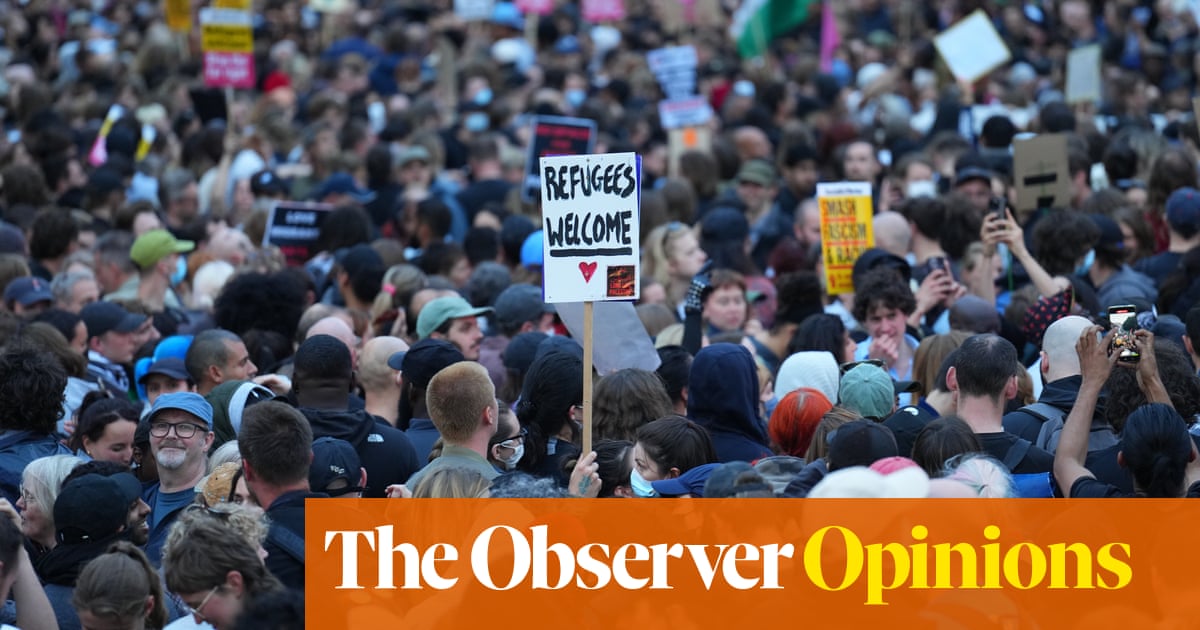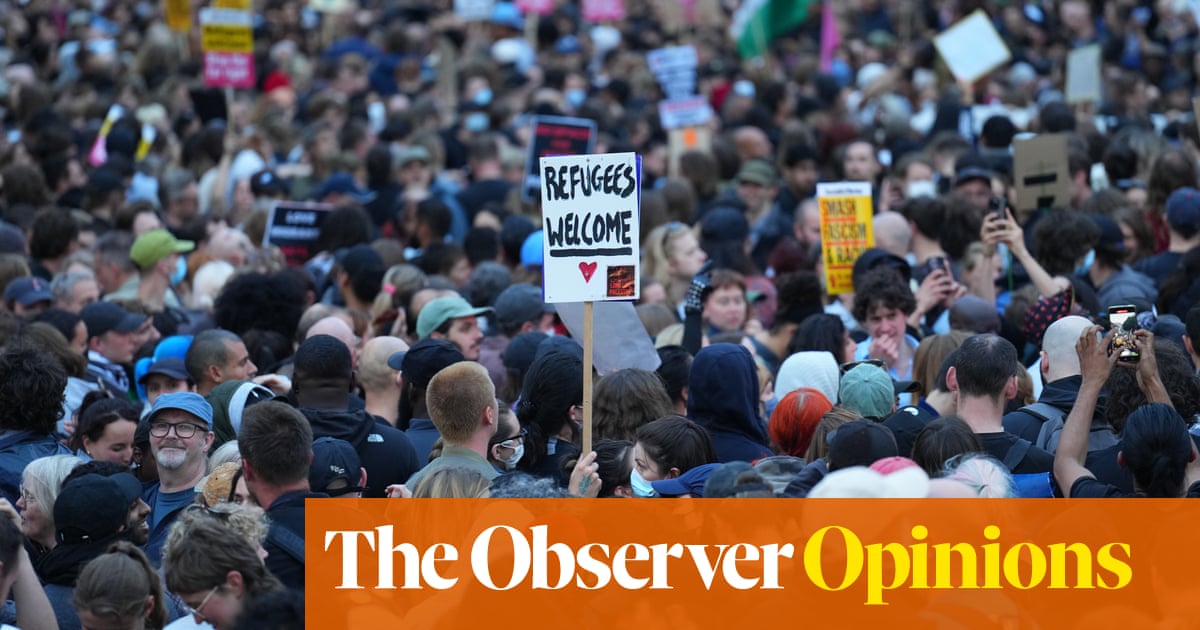
Last Wednesday, businesses closed early and shops boarded up in anticipation of an outbreak of far-right violence in some parts of the country. Six thousand trained police officers were on standby to respond. In the end, it did not materialise on anything like the scale feared: relatively few agitators were dwarfed by huge crowds of anti-racist demonstrators sending a message that the far-right were not welcome in their communities.
That was a huge relief, but, as the prime minister warned on Friday, there is no room for complacency. With hindsight, the social media posts that claimed there would be action in many locations looked more like an attempt to instigate it than a sign of networked organisation. The prompt arrest of so many rioters in preceding days, with some already sentenced to long spells in prison, undoubtedly had a deterrent effect. But on Thursday and Friday nights, anti-immigration unrest continued in Belfast and the police remain on alert this weekend.
What we have seen so far remains on a much smaller scale than the England riots of 2011. But effort must now be devoted to understanding what drove this far-right hijacking of the killing of three young girls, propelled by misinformation about the identity of their attacker. Just 7% of the British public say they support the 2024 riots, but the targeting of mosques and hotels housing asylum seekers has revealed the extent of latent prejudice, including virulent Islamophobia, among a small minority of the population, and heightened fears among minority communities. There is a risk that misinformation about how the state is dealing with unrest – such as the false claim that white offenders are being dealt with more harshly than those of other ethnicities – will stoke further tensions.
Extremists of all types have become adept at using disinformation to attract and provoke people online
Much of the explanation posited so far has come from those looking at the unrest through the prism of their own worldviews. This is not helpful to understanding why it occurred and how to prevent future disorder. The government needs to commission a proper inquiry into who instigated it, who took part and the underlying causes.
The review must look at the role that far-right ideology and organisation played, including the spread of misinformation online. The far right has long exploited the issue of asylum hotels, as highlighted in a 2024 review by the government’s social cohesion adviser, Sara Khan; in 2023, protests outside a Merseyside hotel used to house asylum seekers turned into violent clashes with the police. Extremists of all types have become adept at using disinformation and conspiracy theories to attract and provoke people online. That creates an even more challenging context for the Prevent programme whose objective is to prevent the radicalisation of individuals into far-right, Islamist and other forms of extremism. Social media companies should be doing more to reduce the spread of harmful misinformation; the Online Safety Act is yet to be fully implemented and should help, but it is complex to design levers that work effectively without compromising lawful free expression online.
In light of evidence that most of the 2011 riots occurred in areas ranking in the bottom 10% on measures of social cohesion, the government needs to develop a proper social cohesion strategy. Khan highlights that cohesion is a much broader concept than integration. The former is about supporting “diverse yet established citizens and communities to live well together and be resilient to inevitable tensions that will occur from time to time”; that includes intra-minority and intra-faith tension. The latter is about helping new arrivals to integrate into British life.
Too much commentary in recent days has loosely attributed the riots to poor levels of integration; in fact, the UK performs relatively well on certain measures of integration, with sustained intergenerational falls in levels of prejudice, gradual decreases in levels of residential segregation, and second-generation immigrant children outperforming non-immigrant children at school. Despite several reports on community cohesion since 2000, the government does not have a framework with which to measure it nor an evidence base on what works. There are examples of incidents flaring up and being dealt with very poorly by local authorities; for example, the appalling treatment of the teacher in Batley, West Yorkshire, forced to go into hiding after he taught a lesson on free speech and blasphemy that included images of the prophet Muhammad.
Finally, community cohesion is inevitably undermined by economic hardship. Too many people have poor experiences of a dysfunctional housing market, insufficient economic opportunities and cannot access good public services. This is the product of years of political failure and creates fertile territory for rightwing populists to blame the country’s ills on immigrants: such populism has dominated Conservative politics for the past decade and found recent success in the guise of Reform. There are legitimate debates to be had about the right levels of immigration and how asylum should work; what is illegitimate is pretending that immigration is responsible for the underfunding of the NHS, or a lack of school places, or the high cost of housing, when they are overwhelmingly the product of political choices.
skip past newsletter promotion
Analysis and opinion on the week’s news and culture brought to you by the best Observer writers
Privacy Notice: Newsletters may contain info about charities, online ads, and content funded by outside parties. For more information see our Privacy Policy. We use Google reCaptcha to protect our website and the Google Privacy Policy and Terms of Service apply.
after newsletter promotion
The worst of the unrest is hopefully behind us. But what has played out over the past two weeks serves as a reminder that we cannot take a healthy, pluralistic and tolerant society for granted; it is something that political leaders must learn to nurture.
-
Do you have an opinion on the issues raised in this article? If you would like to submit a letter of up to 250 words to be considered for publication, email it to us at observer.letters@observer.co.uk




